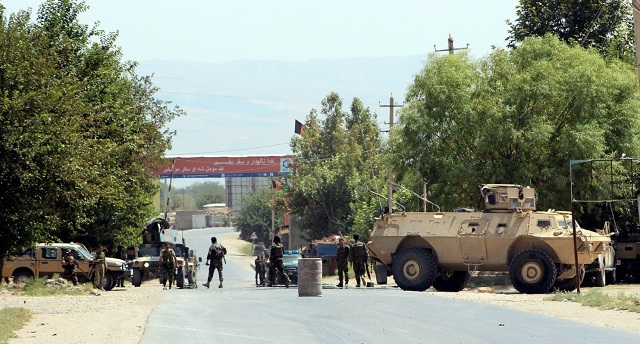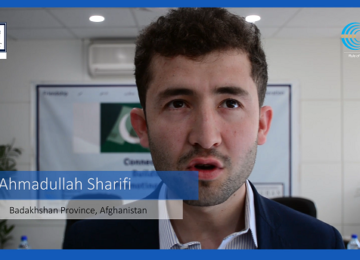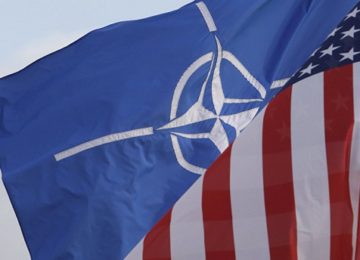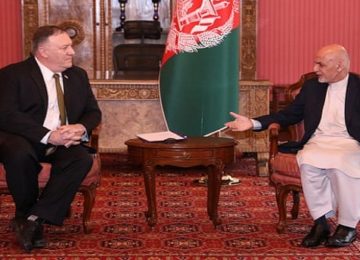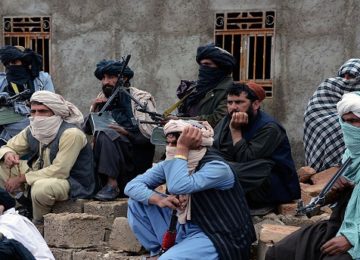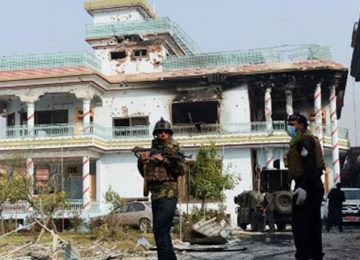Kunduz province faced serious security issues during and after Election Day. The turnout was far lower than expected. This was mainly due to an almost unprecedented level of Taleban violence compared to most other provinces on that day. Three districts were deprived of their rights to vote in their entirety, while six others had a patchy election as, due to the insecurity, some polling centres (PC) frequently kept opening and closing. AAN’s Obaid Ali, who observed the election in neighbouring Takhar, looks at the electoral challenges in this key province of Afghanistan’s northeast (with input from Thomas Ruttig).
Threats and Election Day violence
The parliamentary election on 20 October 2018 in Kunduz province suffered from serious security threats and acute violence. In the last two weeks prior to the elections, the Taleban leadership issued a series of four statements warning people not to take part in the election. In the first, issued on 8 October, they reiterated their April call for an election boycott. The next statement targeted specific groups of people warning them to avoid being involved in the election. On 17 October, they called on university professors, schoolteachers and others in the education sector not to support the elections process. The two following statements were even tougher; one by the preaching, guidance and recruitment commission, and one by the military commission. The first of these, issued on 18 October, called on tribal elders, religious scholars and mosque preachers to stand against the election and to prevent people from taking part. Ten, on 19 October on the eve of the elections, the military commission warned people to “do not allow your homes, guest rooms, schools, religious seminaries, clinics and workers be utilized by the organizers of this vile process.” It said the “intelligence teams of the Islamic Emirate” would be “closely monitoring all development” as a “participation in this process” would amount to “aiding the invaders.”
In Kunduz province itself, people have limited access to the internet and little awareness of the Taleban’s official statements. So, local Taleban officials delivered these statements and warnings directly to the people. In Dasht-e Archi and Qala-ye Zal districts, for example, which are areas under their control, the Taleban’s shadow district governors appeared in mosques during Friday prayers and announced the Taleban leadership’s position on the elections. In other Taleban controlled areas in Kunduz, their fighters individually talked with local elders and mosque preachers, asking them to prevent people from taking part in the elections.
During Election Day and the day after, the Taleban invested much energy in order to disrupt the polls. According to Rasul Omar, head of the Independent Election Commission (IEC) for Kunduz, the Taleban fired mortars at polling centres (PC) in most parts of the province. In several PCs, he said, IEC workers fled to safe places because of the shelling. He told AAN “70 per cent of the total of [89] polling centres were under serious attacks by the Taleban.” He added, “Even inside the city we had serious security issues.” He said Taleban fired mortars against 20 of the 35 PCs that operated inside the city. Abdulbaqi Nuristani, the police chief for Kunduz province, told AAN that frequent mortar fire lasted from the early morning of the Election Day until late into the night.
Zabihullah Majedi, a parliamentary candidate in the province, is also the head of the Journalists Association there. He said more than 100 mortar rounds hit PCs in Kunduz city alone. He said the Taleban inflicted serious casualties on IEC workers and voters. According to him, 15 people were killed and 110 others were wounded in the city because of the shelling. Local journalists in Kunduz confirmed this range of election-related casualties. Rahmatullah Hamnawa, a journalist in Kunduz, told AAN he had recorded more than 120 casualties in Kunduz city. He added that this included police, IEC workers and civilians.
Kunduz was possibly the province most affected by Election Day violence issued by the Taleban. (1) In neighbouring Baghlan, 62 casualties were reported by local government officials, while in Kabul there were 79 election-related casualties reported.
Mursal Setayesh, a civil society activist in Kunduz, told AAN that, due to the Taleban’s mortar shelling, most women feared going out to cast their votes. She said that, apart from the insecurity, the IEC works also had technical difficulties that reduced the number of people who could vote and added “In many PCs voter registration lists were missing and people had to search different PCs to find their names in order to cast votes.” Therefore, she said many female voters left the PCs without casting votes. Speaking to AAN, Karima Sediqi, a female member of the provincial council in Kunduz, said female voters’ participation in this parliamentary election in Kunduz was lower than that in 2010. She added that insecurity was the major factor that reduced the female turnout in Kunduz city. Both Sediqi and Setayesh said the same was the case in the districts where men did not allow their female family members to go out to vote for security reasons.
The Taleban also mined roads. On 23 October 2018, when the author returned from Takhar and travelled through Kunduz, he noticed that parts of the main Takhar-Kunduz highway had been destroyed by explosive devices planted at the roadside during the election days. There were also burned out military vehicles and destroyed police checkpoints visible on that highway.
The Taleban’s ability to inflict a high level of Election Day violence has resulted from a badly deteriorating security situation in the province over recent years. Currently, the Taleban control three districts of Kunduz. In three more districts, the government presence is limited to the district centres and a few villages around the district governor’s compounds. In the remaining three, the government and the Taleban each hold almost half of the districts (read AAN’s previous analysis about security in Kunduz here and here).
Elections in Kunduz city
The parliamentary election in Kunduz city was held in a chaotic environment. There were fears immediately before Election Day that the Taleban might overrun the provincial centre for another time (read media report here). Most of the 35 PCs in the city were targeted by Taleban mortar and rocket fire.
According to journalist Hamnawa, many parliamentary candidates provided transportation for voters to get to PCs. He told AAN that the parliamentary candidates, together with their agents, frequently visited PCs to mobilise people to take part in the election. Speaking to AAN’s Farhad Nuri, a shopkeeper in Kunduz city, said most of the shops in the city ran out of mobile credit cards. “Candidates and their agents bought up all mobile credit cards to call people and to encourage them to vote.” Nevertheless, Hamnawa said, most people preferred to stay away from voting due to the threats and the violence on Election Day.
Impact on turnout
Provincial security officials confirmed that insecurity had caused serious challenges for people wishing to cast their votes. However, Police chief Nuristani told AAN that the Taleban had failed to disrupt the election. He said the security forces “managed to protect the PCs” and – counter-factually, given successful Taleban attacks on two PCs in Imam Saheb – that they “repelled the Taleban’s attacks.” Candidate Majedi added, “Despite of serious risks men and women came out to cast their votes.” Many locals, nevertheless, told AAN that most of the PCs across the province faced serious security challenges to their operation.
Also, the turnout figures from the districts, as suggested above, speak another language compared with the officially given figures and the security officials’ optimistic statements. The Taleban threats before and their attacks on Election Day meant voter turnout figures were much lower than expected – only between 32,000 to 35,000 people voted across the province, according to the Provincial Independent Election Commission (PIEC). (In the 2010 parliamentary election, some 115,000 votes in Kunduz were considered valid by the IEC.) (2) The official 2018 turnout figures represent between 18.8 and 20.6 per cent of the 169,802 registered voters, of whom men were 108,832, women 60,843 and Kuchis 127 (see IEC data for registered voters in Kunduz here), and only seven per cent of the estimated population in voting age. (The number of registered voters was only about 34 per cent of the voting age population; the total population of the province is 1,091,116, according to Afghanistan’s Central Statistic Office, see p25 here).
Of the official 32-35,000 voters, only 8,750 participated in the districts (plus possibly some few in Khanabad and Aqtash districts, but where the district governors refused to give figures). This is around one quarter of the provincial total, meaning that three quarters of the turnout came from Kunduz city.
Technical and organisational problems leading to more disenfranchisement
Apart from the insecurity and violence, technical issues and shortcomings of the provincial IEC workers were the other factors that negatively affected the turnout. Several local journalists in Kunduz told AAN that, in most of the PCs, voter registration lists were not available. This forced people to visit other polling centres in order for them to find their names and be able to vote. The use of the biometric voter verification devices and the lack of experience of the staff in handling them was another factor that meant casting a vote took a long time and resulted in long queues. Waiting for a long time in an insecure situation, and with frequent shelling, made many voters return home without casting their votes.
However, it has remained unclear how many ballot boxes and votes would be invalidated. Muhammad Sediq Samim, the head of the Kunduz Election Complaints Commission (ECC), told AAN that they had already suggested a recount of votes in some PCs in insecure areas. According to him, 239 complaints have been registered for reasons including: “manipulations, fraud, and IEC workers’ were campaigning for some specific candidates.” Samim also said that, in some PCs, there was some ballot box stuffing inside the city and in some districts, but he refused to give the exact locations. Observer organisations also have not been ready to share their findings with AAN thus far.
The ECC call for recounting might result in votes being invalidated in some Kunduz PCs. This would reduce the turnout figures that PIEC announced even further.
Election in Kunduz’s districts
Rasul Omar of the provincial IEC told AAN that voters in three districts, Qala-ye Zal, Gulbad and Gultepa, were not able to cast their votes. In Gulbad and Gultepa, there had been no voter registration at all due to insecurity (see here).
Further, Omar said 18 out of the total 54 PCs in the remaining six districts were closed and six other PCs, in Khanabad and Imam Saheb districts, only operated for half a day because of the Taleban’s intense attacks. This meant that 36 PCs – only two thirds of the total – opened in the districts, and some for only a part of the time. (In 2010, 8.4 per cent of all planned polling stations in Kunduz were reported closed on election day by the IEC, see AAN report here; no figures about polling centres available.)
The election did not take place in three out of a total of nine districts of Kunduz due to insecurity: Qala-ye Zal, Gulbad and Gultepa. AAN interviewed the governors of the six districts where elections were held to obtain an overview of the turnout (district population figures from the Central Statistics Office, p25 here and IEC voter registration figures here). The figures below, according to district governors, are the officially numbers taken from the PCs where the result sheets were published after counting. The final breakdown of the turnout will be released by IEC. AAN tried to corroborate these figures, but the independent election observer organisations declined to share their figures. None has officially published their reports as yet; and only the Transparent Election Foundation of Afghanistan (TEFA) held a press conference on 28 October.
Dasht-e Archi district
In Dasht-e Archi, a heavily contested district, the government presence is limited to the district governor’s compound and a few nearby villages. Therefore, the voters were either local government officials or those who live in the government-controlled areas.
Afghanistan’s Central Statistic Office (CSO) estimated the total population of Dasht-e Archi at 92,576 people. During the voter registration between May and June 2018, the IEC registered 9,277 people as voters; ten per cent of the population. The turnout, however, was far lower. According to Nasruddin Sahdi, the district governor, Taleban threats and a lack of sufficient training of the IEC workers to use biometric devices negatively affected the turnout. Speaking to AAN he said, Taleban targeted four PCs that operated in the district by shooting rockets and machine guns at them. Therefore, he said the turnout in the district was as low as 400 voters – this is only 4.3 per cent of the registered voters and less than one per cent of the voting age population. (3)
Chahrdara district
In Chahrdara, another contested district, to the west of Kunduz city, the government only controls a small part of the district centre. Therefore, the IEC had opened only one PC in the government-control area and this had remained closed until 11:00 am.
Turnout remained very low. According to district governor Zalmai Faruqi, the Taleban blocked most of the roads leading to district centre to prevent people from reaching the PC. He told AAN that the Taleban also fired mortars and rockets targeting the district centre. According to Faruqi, the number of voters was 450 people, ie 12.5 per cent of the registered voters and around one percent of the population in voting age. The total population of the district, according to CSO, is 80,196 people. The IEC had registered 3,598 voters, 4.4 per cent of the total population.
Aliabad district
In Aliabad, the government presence is larger compared to Dasht-e Archi and Chahrdara and they control almost half of the district. The CSO estimates its total population at 51,455 people. According to IEC data, 7,815 people were registered as voters. This is less than two thirds of the voting age population.
District governor Emamuddin Quraishi told AAN that the turnout was between 2,700 and 2,800 voters, ie 34.5 to 35.8 per cent of the registered voters and slightly over 20 per cent of the total voting age population. Quraishi said “Taleban fired mortar rounds and rockets against the PCs during the Election Day; most voters did not take a risk to get out and to cast their votes.” There were eight PCs in Aliabad, and six of them were open.
Imam Saheb district
Imam Saheb, another contested district in northern Kunduz, also faced serious security threats. The Afghan government controls almost half of it. The remaining half is either control by the Taleban or else is heavily contested by them. The CSO estimates its total population at 220,256 people. The IEC recorded a high number of registered voters, 41,147 people.
According to district governor Mu’in Saedi, the Taleban carried out attacks against PCs in several parts of the district. He told AAN that the Taleban overran two PCs, Ab Forushan primary school and Abdulrahman Turk primary school, and took away election materials, including biometric devices. A further three PCs, out of a total of 19, remained close because of insecurity. Saedi said the turnout was low, with between 4,000 and 5,000 voters. That would be between 9.9 and 12.1 per cent of the total registered voters (between 3.6 and 4.4 per cent of the total voting age population).
Khanabad district
Khan Abad is another example where the government’s presence is larger than the Taleban’s, but where there was a low turnout. The CSO estimated the population at 150,544 people, of which the IEC registered 22,840 people as voters (less than one third of the voting age population). During and after the Election Day the Taleban launched rockets and shot with machine guns at the district centre to disrupt the security. As a result, one PC remained close and two others, out of a total 14 PCs, operated for some hours only in the morning of the Election Day.
District governor Hayatullah Ameri told AAN that insecurity was the major factor that prevented many voters from casting their votes. He refused to share information on the number of voters. However, he said the turnout was “very low.”
Aqtash district
Aqtash is a newly established district largely controlled by the Taleban. The CSO gives a total population estimate of 26,629 people. The IEC registered 4,781 people as voters. According to district governor Zabihullah Aimaq, there were two PCs in the district and both operated on Election Day. Aimaq said there were “good elections” in his district. He refused to give further details about the turnout and security during the Election Day. Haji Fazel, a local from Aqtash, told AAN that, because of Taleban large presence in the district, most people did not take part in the election. He added that the two PCs were both located in government-control area.
Qala-ye Zal district
Qala-ye Zal had 2,583 voters registered by the IEC, but no election took place because of general insecurity and Taleban attacks against the district centre. As a result, all three PCs that were supposed to operate in the district (all in its centre) reportedly remained closed.
Gulbad and Gultepa districts
Both Gulbad and Gultepaare newly established districts that are entirely under Taleban control. Therefore, neither voter registration, nor parliamentary election, took place.
Large voter disenfranchisement in rural and urban areas
Kunduz’ low turnout and its high degree of resulting voter disenfranchisement was caused mainly by the Taleban’s aggressive stance towards the election and high-level of actual violence on Election Day. These problems were exacerbated by the same technical and organisational problems reported from elsewhere in the country. However, the Taleban threats and violence failed to entirely stop Kunduzis from taking part in the election.
The combination of security and organisational problems strongly impacted not only Kunduz’s rural, but also its urban, population. The urban-rural divide observed by AAN in other provinces also manifested itself in Kunduz, as a large majority of voters came from the provincial and some district centres.
The question remains as to whether a larger number of people will take part in the presidential election scheduled for April 2019, if the security situation does not significantly improve.
(1) In the 6 November 2018 UNAMA civilian protection special report “2018 Election Violence” that was released while this text was under work, Kunduz province is not mentioned. According to this National Democratic Institute report, already the 2010 parliamentary elections were “plagued by election day violence.” It quotes candidates saying voter turnout was “extremely low”, particularly in Chahrdara and Dasht-e Archi.
(2) Read AAN impressions from the presidential elections in 2014 here and here.
(3) According to the World Bank, nearly two thirds of Afghanistan’s population is below 25 years of age. This gives a countrywide voting age population of around 50 per cent. We use this percentage here roughly, in order to show orders of magnitude, rather than the exact figures.
By Special Arrangement with AAN. Original link.
Disclaimer: Views expressed on this blog are not necessarily endorsed or supported by the Center for Research and Security Studies, Islamabad.



